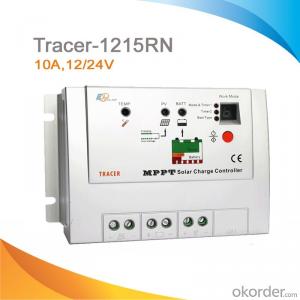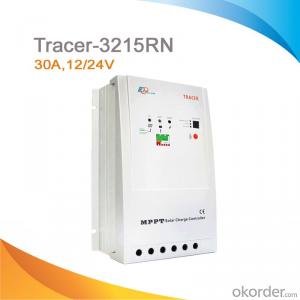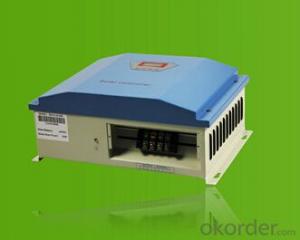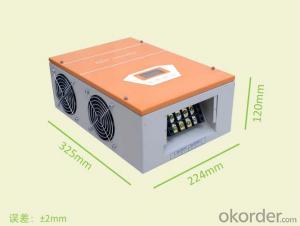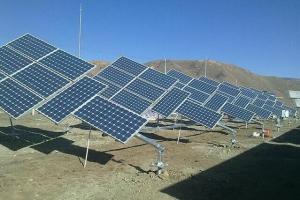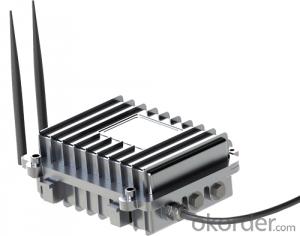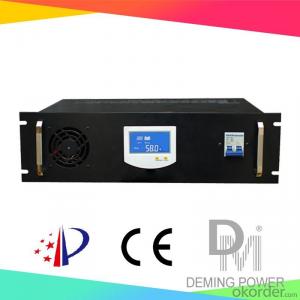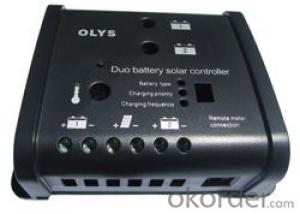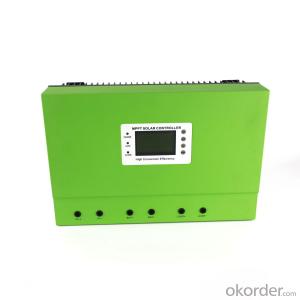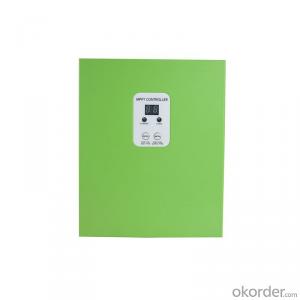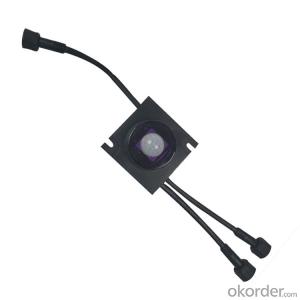Tracer Mppt Solar Controller
Tracer Mppt Solar Controller Related Searches
Mppt Solar Inverter 12 Volt Mppt Solar Inverter 24v Tracer Mppt Solar ControllerHot Searches
China Mppt Solar Inverter Mppt Solar Inverter Price Solar Charge Controller Price List Solar Charge Controller Specification Solar Charge Controller Price List Solar Charge Controller Specification Solar Charge Controller Price List Solar Charge Controller SpecificationTracer Mppt Solar Controller Supplier & Manufacturer from China
Okorder.com is a professional Tracer Mppt Solar Controller supplier & manufacturer, offers integrated one-stop services including real-time quoting and online cargo tracking. We are funded by CNBM Group, a Fortune 500 enterprise and the largest Tracer Mppt Solar Controller firm in China.Hot Products
FAQ
- The role of a solar controller in preventing damage to solar panels from power surges is crucial. A solar controller, also known as a charge controller, acts as a regulator between the solar panels and the battery or power grid to ensure that the energy generated by the panels is efficiently and safely stored or used. One of the main functions of a solar controller is to protect the solar panels from power surges. Power surges occur when there is a sudden increase in voltage, which can happen due to lightning strikes, grid fluctuations, or other external factors. These surges can be harmful to the delicate electronic components of the solar panels and can significantly reduce their lifespan or even render them useless. A solar controller prevents damage from power surges by controlling the flow of electricity from the panels to the battery or grid. It regulates the voltage and current levels to ensure that they stay within safe parameters. When a power surge occurs, the controller detects the sudden increase in voltage and acts as a barrier, preventing it from reaching the solar panels. Additionally, many solar controllers come equipped with built-in surge protection devices, such as surge arresters or metal oxide varistors (MOVs). These devices absorb excessive voltage spikes and redirect them away from the panels, further safeguarding them against damage. In summary, the role of a solar controller in preventing damage to solar panels from power surges is to regulate the flow of electricity and protect the panels from sudden voltage spikes. By acting as a barrier and incorporating surge protection devices, the controller ensures the longevity and optimal performance of the solar panels, ultimately maximizing the efficiency and effectiveness of the solar power system.
- Yes, a solar controller can be used with a solar water pumping system. A solar controller is an essential component of a solar water pumping system as it helps regulate the flow of electricity from the solar panels to the water pump. It ensures that the pump receives the right amount of power to operate efficiently and protects it from any potential damage due to overvoltage or overcurrent. The solar controller also helps optimize the performance of the system by tracking the maximum power point of the solar panels and adjusting the voltage and current accordingly. Overall, a solar controller is crucial for the proper functioning and longevity of a solar water pumping system.
- Solar-powered indoor government buildings can effectively utilize a solar controller. Also referred to as a charge controller, a solar controller plays a crucial role in a solar power system. Its main function is to regulate the flow of electricity between solar panels and batteries. This ensures that the batteries are efficiently charged and prevents any damage caused by overcharging. To generate electricity, solar panels in these buildings harness sunlight. This electricity powers various devices and systems within the building. In order to manage the charging process of the batteries that store this solar energy, a solar controller becomes necessary. By connecting the solar panels to the solar controller and then to the batteries, the solar controller can effectively monitor and control the charging process. This maximizes battery efficiency and lifespan. Furthermore, solar controllers often offer additional beneficial features, including temperature compensation, load control, and battery protection. These features are particularly important for indoor government buildings as they optimize the performance of the solar power system and ensure a reliable and sustainable power supply. Therefore, it is highly advisable to incorporate a solar controller in conjunction with solar-powered indoor government buildings. This guarantees the efficient and safe operation of the solar power system.
- The main components of a solar controller typically include a charge controller, which regulates the flow of electricity between the solar panel and the battery, ensuring the battery is not overcharged or damaged. Additionally, a solar controller may also have a load controller, which manages the flow of electricity from the battery to the connected load, such as lights or appliances. Some advanced solar controllers may also include features like LCD screens, voltage regulators, temperature sensors, and communication ports.
- The price range for a solar controller can vary depending on the brand, features, and specifications, but generally, they can range from $20 to $200.
- A solar controller prevents excessive heating of batteries by regulating the amount of charge flowing into them from the solar panels. It monitors the battery's voltage and temperature, adjusting the charging rate accordingly to prevent overcharging and overheating. Additionally, some advanced solar controllers have built-in temperature sensors that can automatically adjust the charging parameters based on the battery's temperature, ensuring optimal charging without risking damage or excessive heat buildup.
- To connect a solar controller to a solar-powered water heater, you will need to follow a few steps: 1. Identify the solar controller: The solar controller is a device that regulates the flow of energy from the solar panels to the water heater. It is typically located near the solar panels and will have various input and output terminals. 2. Determine the type of solar controller: There are different types of solar controllers available, such as PWM (Pulse Width Modulation) and MPPT (Maximum Power Point Tracking). Make sure you have the appropriate controller for your system. 3. Locate the water heater: Identify the water heater's input and output terminals. These terminals are usually marked as "inlet" and "outlet" on the heater. 4. Connect the solar panels: Connect the solar panels to the input terminals of the solar controller. Follow the manufacturer's instructions for proper wiring and ensure that the positive and negative terminals are correctly connected. 5. Connect the water heater: Connect the outlet terminals of the solar controller to the inlet terminals of the water heater. Again, refer to the manufacturer's instructions for proper wiring. 6. Configure the solar controller: Once the connections are made, you may need to configure the solar controller based on your specific system requirements. This may involve setting temperature limits, flow rates, or other parameters. 7. Test the system: After completing the connections and configuration, test the system to ensure it is functioning correctly. Monitor the water temperature and flow to verify that the solar controller is effectively heating the water. Remember, it is crucial to consult the user manual or seek professional assistance if you are unsure about any step or have any concerns. Safety precautions should always be followed when working with electrical components.
- The maximum distance a solar controller can be placed from the batteries depends on the specific model and its design. In general, the distance should be minimized to reduce voltage drop and ensure efficient charging. It is recommended to consult the manufacturer's specifications or guidelines for the specific solar controller being used to determine the maximum distance allowed.

